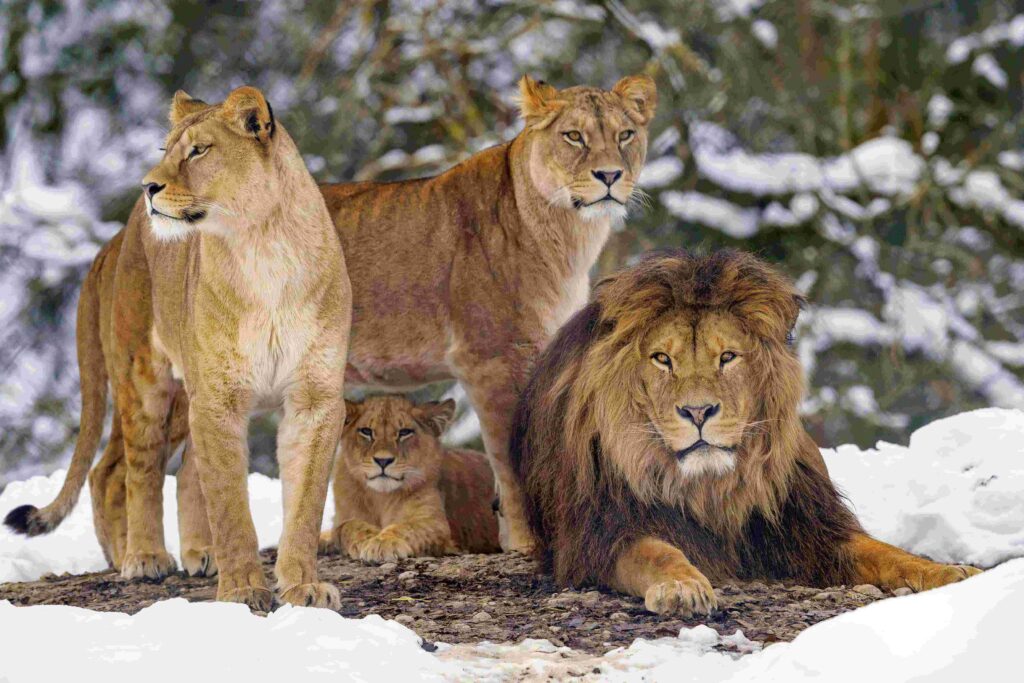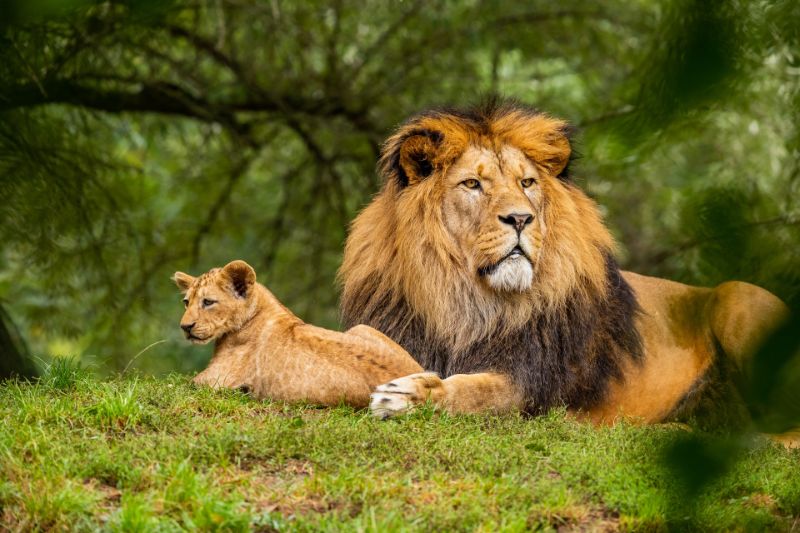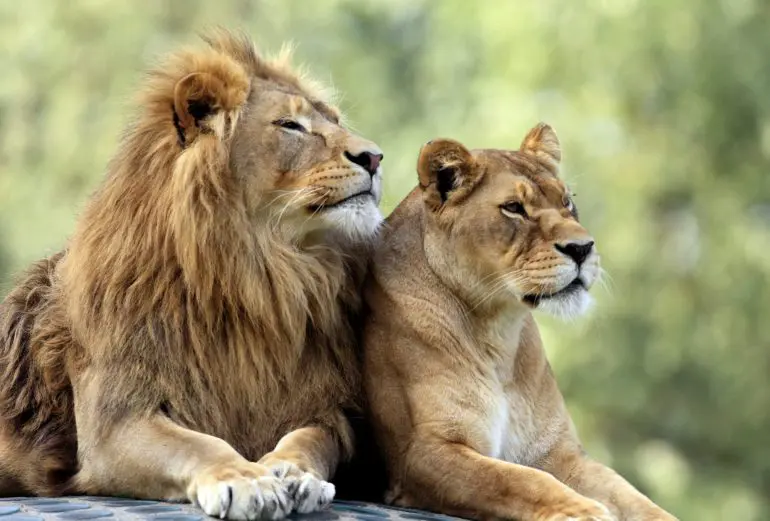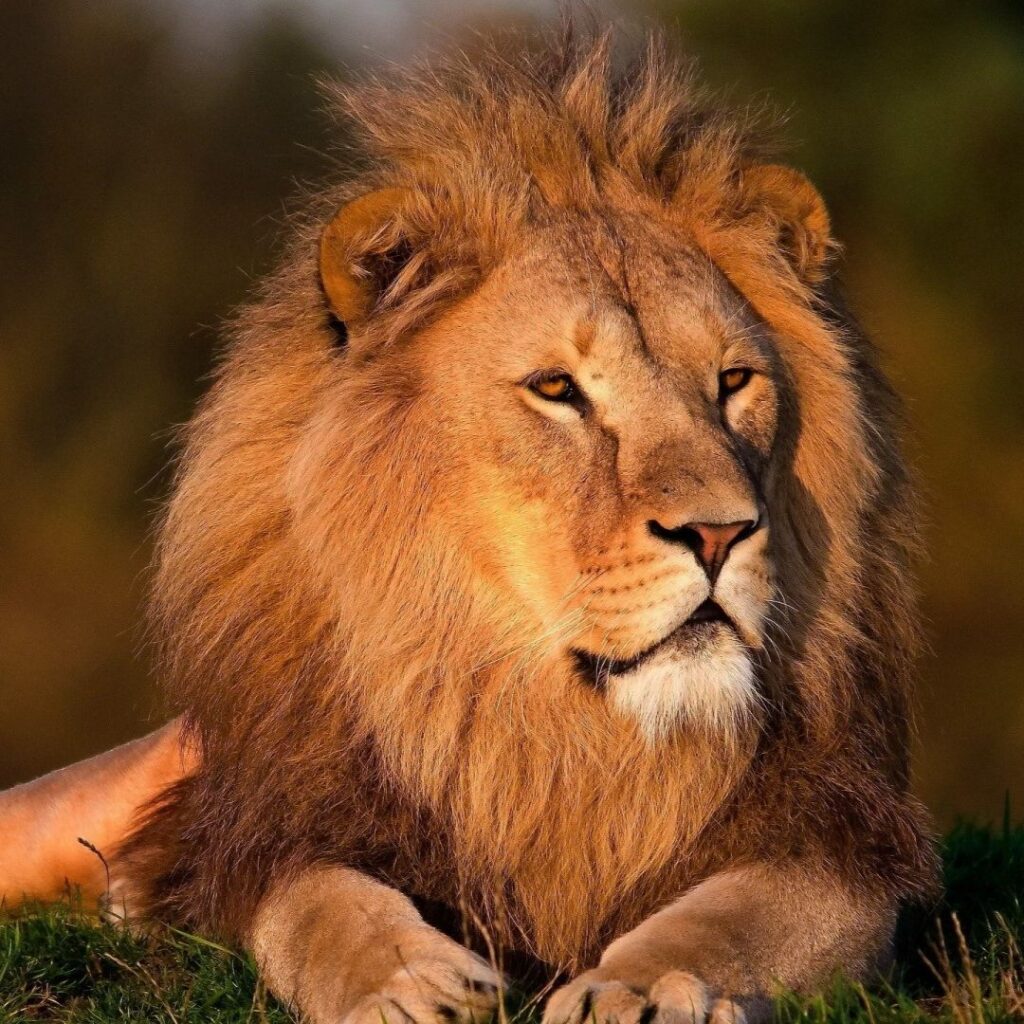Lions are the only big cats that live in social groups known as prides. A pride typically consists of related females, their cubs, and a few adult males. There are two recognised lion subspecies of lion found in the wild. The African lion (Panthera leo leo) is found in Africa, south of the Sahara desert. The Asiatic lion (Panthera leo persica) exists in one small population around Gir Forest National Park in western India.
Also Read about, Interesting Facts About Tiger, The Largest Wild Cat

Interesting Facts About the Lion
Lions live in grasslands and savannas, not dense forests.

Male lions can weigh up to 190kg and females weigh 126kg.

Lions mostly hunt at night as their eyes have adapted to the dark and this gives them a huge advantage over their prey.
Male lions are distinguishable by their impressive manes, which serves as a visual indicator of their health and dominance. The darker and fuller the mane, the more attractive they are to potential mates.
Female lions are the primary hunters in the pride. They work together to coordinate and execute hunting strategies, making them highly effective predators.
Lions are known to be quite lazy and sleep for an average of 16 to 20 hours a day, conserving energy for hunting during the cooler hours of the day.
Lions are incredibly fast runners. They can reach a speed of up to 80 km/h for short distances.
Lions are very vocal creatures and communicate through various sounds, including roars, grunts, growls, and meows. Roaring is a distinct feature of male lions, which can be heard up to 8 km away.
Lion cubs are blind at the time of their birth. They rely on their mothers for protection and nourishment. They are usually hidden in dense vegetation for the first few weeks of their lives.

Lions are highly territorial animals, and prides fiercely defend their territories from other prides or intruders. Males from outside prides may challenge the resident males for control of the pride.
Conservation Status: Lions are considered vulnerable and face threats such as habitat loss, human-wildlife conflict, and poaching. Conservation efforts are essential to protect these magnificent creatures.
Watch full video on, Tiger Is The Largest Wild Cat In The World

